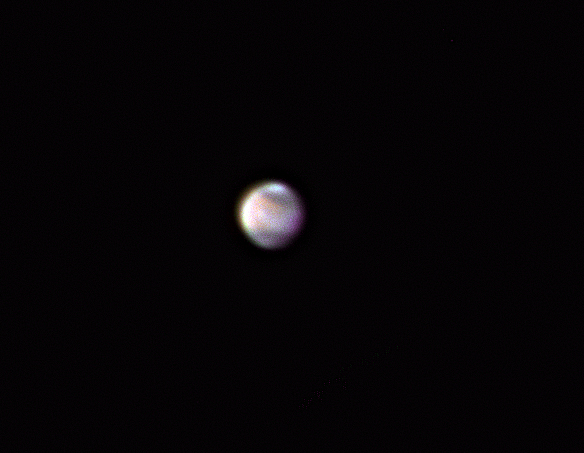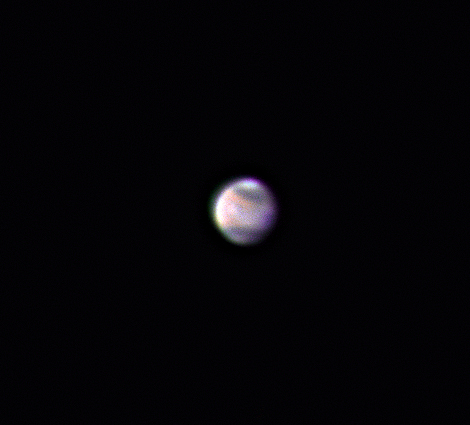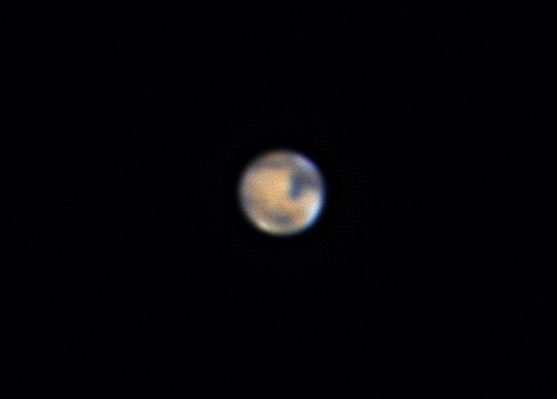
Combination of 90, 0.02 second images, unfiltered.
SBIG ST-10XE CCD. 20" f/6.8 Dall-Kirkham cassegrain with a 2x barlow lens.
Mars is probably the planet that has fascinated mankind since telescopes were invented. It is the only plant other than the Earth for which we can clearly see the surface, and superficially at least, it is the most Earth-like in the solar system. Unfortunately, Mars is such a small planet, that good views can only be obtained during opposition, and oppositions only occur at intervals of about 2 years and 2 months. On top of this, the orbit of Mars has a rather high eccentricity, so not all oppositions are favourable. The most favourable oppositions occur some 15 years apart! During the early 2000's the oppositions were quite favourable, with that of 2003 being particularly so. By the time of the 2011/2012 opposition however, Mars was very far away from the Earth and so remained quite small.

Several clouds are visible on the left of the image. These are where the air is flowing over the high volcanoes of the Tharsis bulge causing the clouds to form. The large, dark, wedge-shaped feature is Syrtus Major.
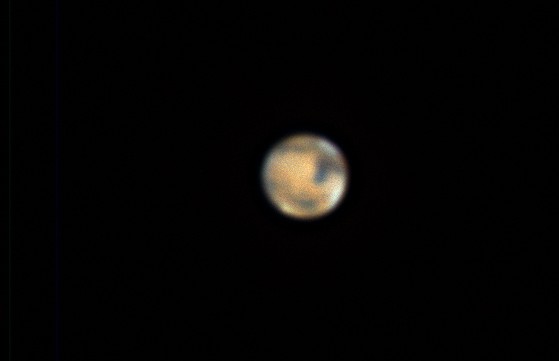
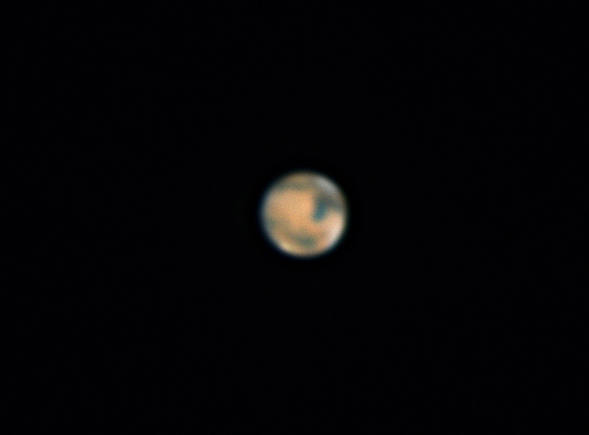
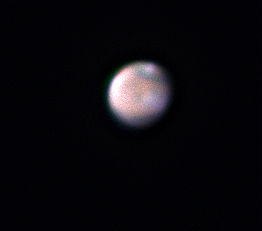
Visible near the centre of the image are several clouds over the high volcanoes of the Tharsis bulge.
